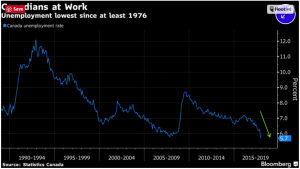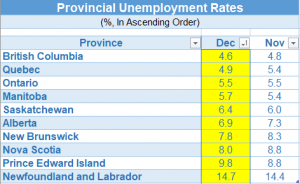While the Bank of Canada’s latest increase in its overnight interest rate is a move marked with characteristic caution, a combination of existing factors means that the hike will still make significant waves in the nation’s economic engine, according to Dr. Sherry Cooper of the Dominion Lending Centres.
The BoC’s decision to increase the rate to 1.25%, which marked the third hike since July 2017, pushed the figure to its highest level since the global financial crisis, Cooper said.
“The move comes in the wake of unexpected labour market tightening and strong business confidence and investment. The Canadian economy is bumping up against capacity constraints as the jobless rate has fallen to its lowest level in more than 40 years,” Cooper explained in her latest posting.
Read more: Rate-hike cycle already the most severe in two decades
“Inflation is just shy of the 2.0% target level and wage rates are rising, albeit at a relatively moderate pace,” she added. “Exports have been weaker than expected. NAFTA uncertainty is ‘weighing increasingly’ on Canada’s economic outlook as cross-border shifts in auto production are already beginning.”
Cooper cautioned that consumption and housing will slow as a result of the combination of higher interest rates and new mortgage guidelines.
“Growth of household credit has slowed somewhat since the first half of 2017, even though some households may have pulled forward borrowing in anticipation of the new B-20 guidelines related to mortgage underwriting from the Office of the Superintendent of Financial Institutions (OSFI). This slowing is consistent with higher borrowing costs due to the two policy rate increases in 2017,” Cooper quoted last week’s Monetary Policy Report (MPR) as saying.
Cooper warned that with higher interest rates, the costs of debt servicing will rise, which in turn will put a damper on consumption growth, “particularly of durable goods, which have been a significant driver of spending in recent quarters.”
“Elevated levels of household debt are likely to amplify the impact of higher interest rates on consumption, since increased debt-service costs are more likely to constrain some borrowers, forcing them to moderate their expenditures,” the MPR went on to say.


